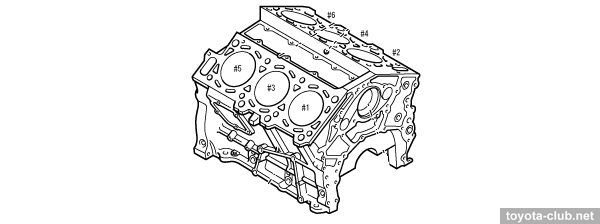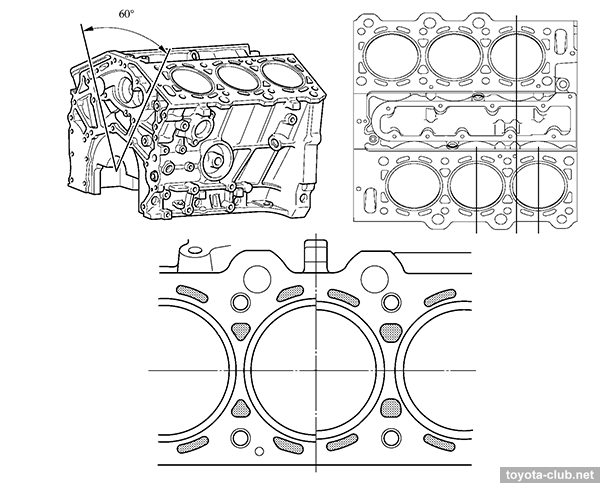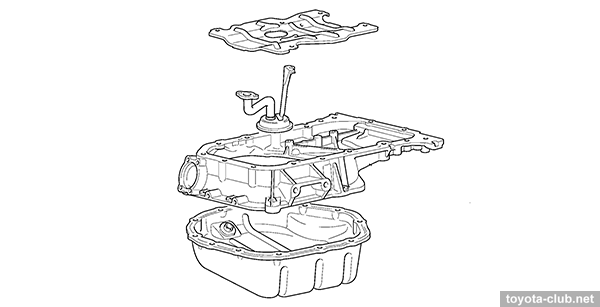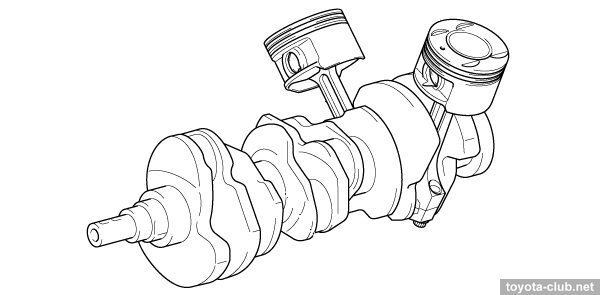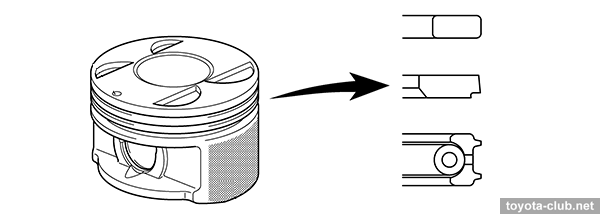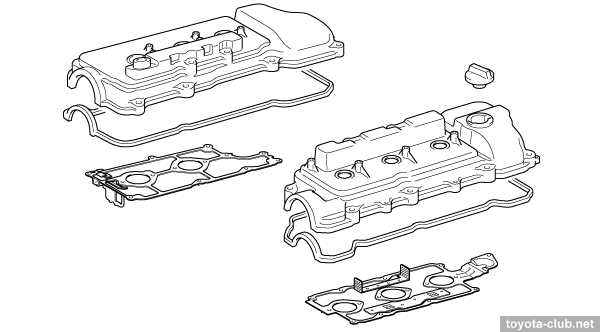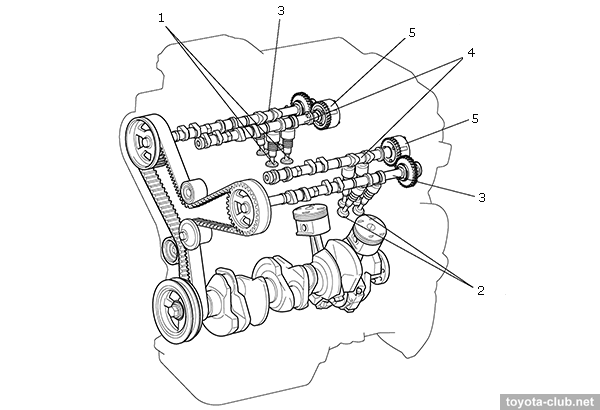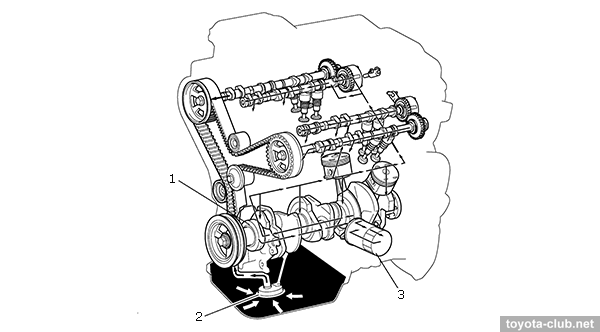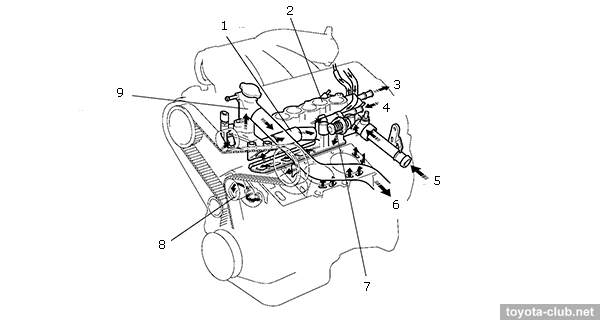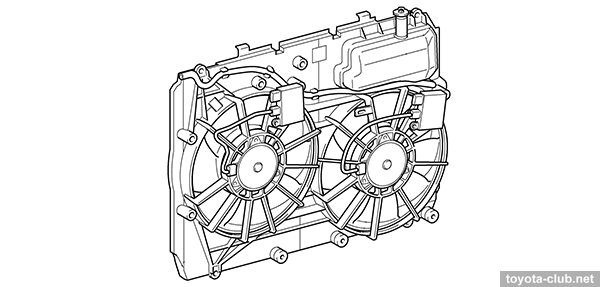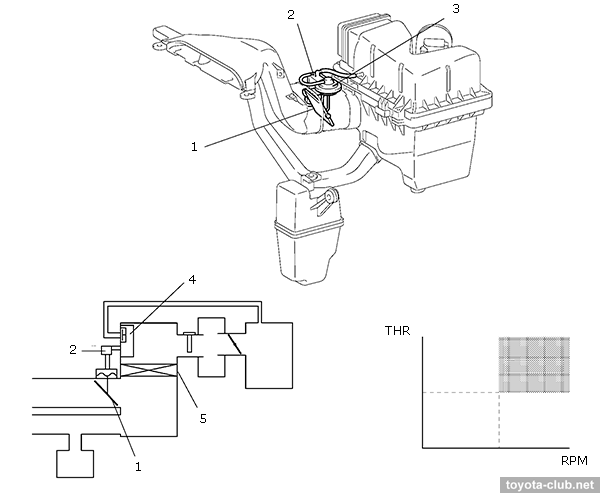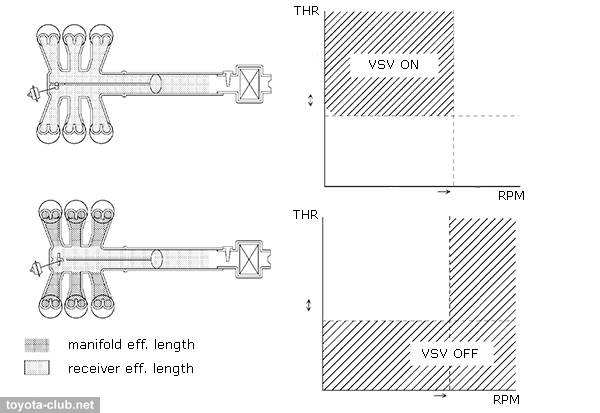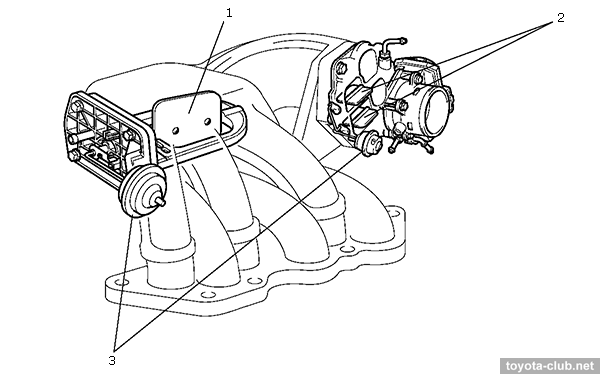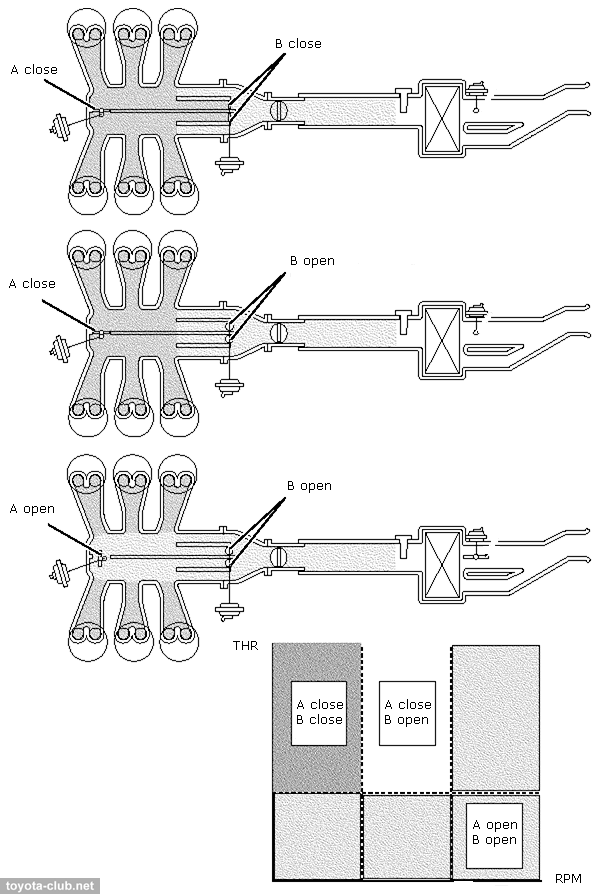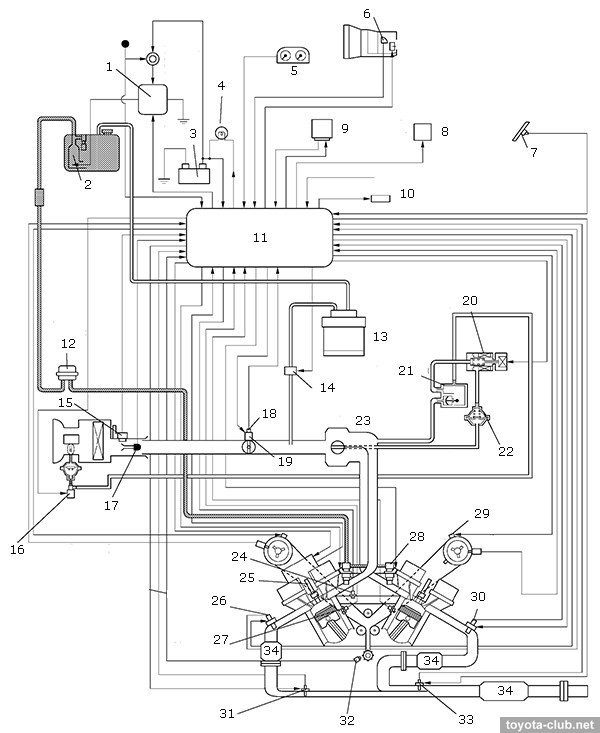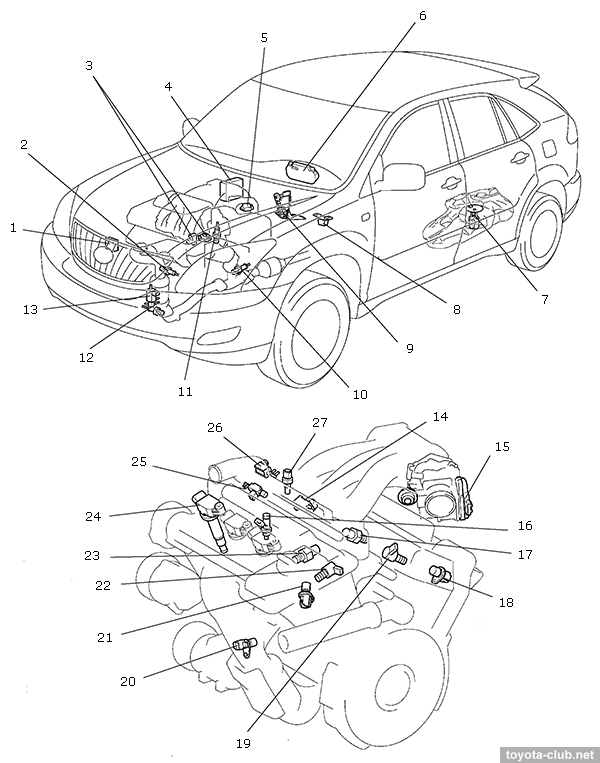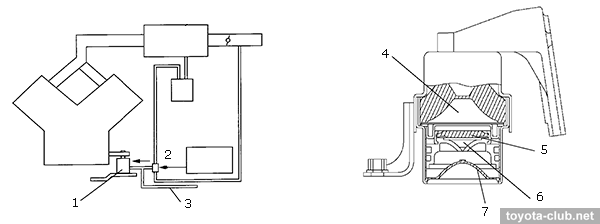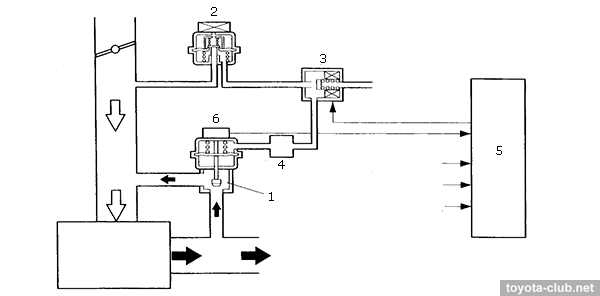|
Eugenio,77
MZ engines replaced the transverse models of VZ series. From the mid-1990s to the mid-2000s, MZ installed in E-class cars, minivans, full-size SUVs; hybrid versions were in use until the early 2010s. Later, their place in the lineup was formally inherited by 2GR, but in real the bet was made on hybrid powertrains with 4-cylinder engines.
Firing order: 1-2-3-4-5-6. Cylinder numbering: from the pulley side, right (rear) bank - 1-3-5, left (front) bank - 2-4-6.
1MZ-FE (3.0 EFI) type'93/96/01. Applications: Camry 10U 1993-96, Lexus ES300 1993-96, Avalon 10U 1994-96, Windom 20 1996-98, Mark II Qualis 1997-99, Avalon 10J 1995-2000, Avalon 10U 1996-99, Camry 20U 1996-2001, Camry 30U 2001-03, Lexus ES XV20 1996-2001, Sienna 10 1997-2000 1MZ-FE (3.0 EFI VVT) type'97/03. Applications: Windom 20 1998-2001, Windom 30 2001-06, Mark II Qualis 1999-2001, Pronard 20 2000-03, Harrier 10 1997-2003, Harrier 30 2003-06, Kluger 20 2000-07, Estima 30 1999-2006, Alphard 10 2002-08, Camry 30U 2003-06, Lexus ES300 1998-2001, Sienna 10 2000-03, Highlander 2000-03, Avalon 20U 1999-2005, Lexus RX300 1998-2003 2MZ-FE (2.5 EFI) type'96. Applications: Windom 20 1996-2001, Camry Gracia 20 1996-2001, Mark II Qualis 1997-2001 3MZ-FE (3.3 EFI VVT) type'03. Applications: Camry 30U 2003-06, Highlander 20 2003-07, Sienna 20 2003-06, Lexus RX330 2003-06, Lexus ES330 2003-06 3MZ-FE (3.3 EFI VVT HV) type'05. Applications: Harrier Hybrid 30 2005-12, Kluger Hybrid 20 2005-07, Highlander Hybrid 2005-07, Lexus RX400h 2005-08 Engine mechanical The cylinder block - aluminum "closed deck" with thin cast iron liners (unlike all subsequent series with an open deck), cylinder bank angle is 60°. No overhaul with reboring provided (formally).
The oil sump consist of massive upper part and stamped steel lower sump.
Forged steel crankshaft with 4 journals and 9 balance weights is held by individual main bearing caps, which are fastened by four main bolts and by another two side bolts to block walls for maximum rigidity.
Pistons - of aluminum alloy, with a relatively compact skirt, different for the right and left banks (1MZ) or equal, but with a greatly reduced piston top height (3MZ). Later types obtained friction reducing polymer coating on the skirt. The pistons are connected to the rods with fully floating pins. The compression rings (upper of steel, lower of cast iron) are protected with anti-corrosion zinc phosphate coating, or PVD coating (later types). The oil ring is made of three (early) or two (later) parts.
The cylinder head is of a classic design, without a separate camshaft housing, without lash adjusters (valve clearance is adjusted with top-side shims).
The heads are covered with aluminum covers with oil separators.
Timing drive - 24-valve DOHC, driven by a belt from the crankshaft to the exhaust camshafts and then by a gear train to the intake camshafts. Belt tensioner - spring type, with a silicone damper. The belt is covered with plastic covers.
1MZ had fixed timing and VVT versions, 2MZ - only fixed timing, 3MZ - only VVT. VVT actuators for the intake camshafts are installed, timing variations range is 60°. More about Toyota VVT operation - see the article. The hybrid version of 3MZ differs by intake valve timing 28° shift to the retard side. There is no collision between valves and pistons if the belt broken at 1MZ (non-interference), but 2MZ and 3MZ are interference type. Lubrication Trochoid oil pump is driven by crankshaft. The oil filter is classic type, installed horizontally on the left side.
Cooling The pump is installed in a cast chamber of the cylinder block and is driven by the back side of the timing belt. Mechanical thermostat with opening temperature 77-82°C. The cooling circuits of the heads are connected by channels of the intake manifold.
The first type'93 obtained the very sophisticated hydraulic drive of the radiator fan like VZ series. Since type'96, normal twin electric fans are used, with a step speed regulation. On type'03 stepless fan speed control is used.
Intake and exhaust Since type'97 and '01, the AICV pneumatic actuator is used, which closes one of the two channels between the air inlet and the filter. At low and medium speeds, the valve closes, air flows to the filter through a smaller opening, which helps the resonator to reduce intake noise. At high revs, both channels open, increasing intake efficiency.
At early versions an aluminum receiver is used, while later versions obtained a lightweight plastic receiver. Almost all versions were equipped with the ACIS system of varying complexity, which changed the effective length of the intake tract to improve engine performance due to the effect of dynamic boosting with pulsating air flow in the manifold. In a single-valve system, the receiver is divided by a partition, the damper of which is pneumatically controlled. When activated, the VSV closes the valve, resulting in a longer intake manifold effective length, improving intake efficiency at low and medium rpm. When deactivated, the VSV opens the valve, the working length of the intake is shortened and maximum efficiency is realized at high rpm.
In the ACIS-V system, a second actuator is installed between the throttle valve and the receiver.
AICV and ACIS are absent at hybrid versions of 3MZ Some models have the muffler with a mechanical valve that regulates the flow of exhaust gases. At low speed closed valve helps to reduce noise, at high speeds it is opened reducing the back-pressure. For 1MZ type'96 of the American market, a supercharger was offered as a branded kit from TRD. Fuel system / Engine control (EFI) Fuel injection - traditional multipoint, sequential under normal conditions. In some conditions (low temperature and low speed) group injection can be performed. The injection can be performed synchronized (once per cycle at the same position of the crankshaft, with adjusted injection duration) or unsynchronized.
L- type EFI injection system, with hot-wire mass air flow (MAF) sensor . The original 16-bit engine ECU processor has been upgraded to 32-bit at type'03. The first type'93, had a fuel system with a return line, vacuum pressure regulator, under-hood filter and hot-pressurization function (via VSV). Since type'96, a returnless system is used, with a pressure regulator and a fuel filter built into the pump module. The pressure pulsation damper is external, on the fuel delivery pipe. Early type injectors - with an air assist, late - conventional with 12-point nozzles. The throttle was developed from the earliest version with a 80s-like rotary-type idle speed regulator and idle switch, to a modern ETCS at type'03, without a mechanical link to the pedal, full electronic control, non-contact type throttle and accelerator position sensors. Knock sensors are installed on each bank at the middle cylinder zone; later types obtained "flat" broadband piezoelectric sensors. Oxygen sensors of type'93/96 - one in each exhaust manifold and one after a single catalyst. At type'03, the first sensor for each bank is a planar air-fuel mixture ratio sensor (AFS), and downstream of each front catalysts there is a conventional oxygen sensor. The crankshaft and camshaft position sensors are inductive type.
Active front mount is used on many MZ versions to reduce idle vibration. ECM commands VSV to supply vacuum to the mount changing the pressure in the air chamber. The diaphragm vibrates and transmits vibrations through the liquid to the rubber part, which compensates for vibration of the engine at idle speed. The desired frequency of pulses is regulated by selected orifices and vacuum drain hose.
Official RON requirements are by no means technical and market dependent. · US: RON 91 is nominal, increasing to 96 is allowed to improve performance. · JP: Premium is nominal, using of Regular is allowed but it may cause power output decrease. · EU: RON 95 is nominal (in fact, there is not a lower RON gasoline on the European market). · GEN: RON 91 is nominal. Ecology EGR (Exhaust Gas Recirculation) poisoned the early types of the American market. First, in the simplest version, with a vacuum modulator and single VSV, since type'96 - with PWM control of the vacuum actuator and feedback via EGR valve position sensor.
EVAP (evaporative emission system) - normal for most markets, and traditionally overcomplicated for USA. PCV (crankcase ventilation) - fresh air enters the LH head, crankcase gases are taken to the intake manifold through the PCV valve in the RH head. Oil separator plates are mounted in valve covers. Electrical Type'93 ignition system - with separate coils, but powered via a single igniter. Type'96 obtained DIS-3 system - a high-voltage wire goes from the coil installed on the spark plug of one cylinder to the spark plug of the other bank, the spark is supplied simultaneously to both spark plugs (Denso PK20TR11 or NGK BKR6EKPB11, two-electrode with platinum coating). More recent types obtained the classic DIS-6 (individual ignition coil for each cylinder, "iridium" spark plugs Denso SK20R11 or NGK IFR6A11). Generator type'03 - with segment coil, output current 130A. Starter type' 03 - new 1.7 kW with planetary gear and segment armature coil and permanent magnets instead the field coil. Hybrid 3MZ does not have a starter and alternator. Auxiliary drive - by separate belts. Experience MZ engines are quite boring from a journalistic point of view - due to the absence of critical defects. • The only scandal in the early 2000s was associated with the oil gelling / oil sludge problem - but then the defect was largely due to the peculiarities of poor operation. • The early types were oversensitive with respect to knock control, which led to a non-optimal ignition timing and power loss. • At US-versions, traditional problems were created by unnecessary components of emission reduction system, like the EVAP. • It is obvious today, that all MZ engines are already old, if not ancient, and the common problem of oil consumption (over a liter per thousand km) is rather the norm for them. However, it is still often associated not with understandable wear or piston rings stuck, but with an unsuccessful design of the crankcase ventilation system. And offen the issue is solved by folk remedies, cleaning excessive deposits of oil sludge, installing modified valve covers, reinstalling the PCV valve to the front head, etc. MZ is not the first engine of "third wave" - only the aluminum block construction has in common with the revolutionary NZ-ZZ-AZ series. And unlike most of them, the first of the "disposable" (non-reboring) Toyota series turned out to be more than successful and reliable. MZ can be also called the most "popular" of the conditionally premium series - the most low-cost Toyota cars with more than four cylinders and two hundred hp, and these models were much more mass, practical and user-friendly than rather specific rear-wheel drive sedans with more legendary JZ series. Toyota engines review |
|


